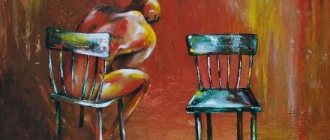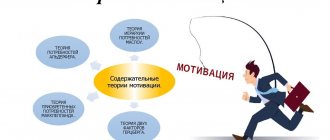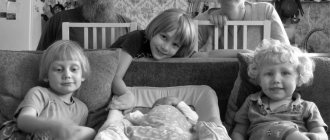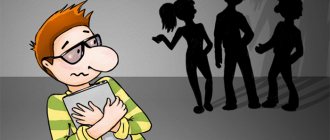Perceptual image
Types of figurative phenomena. Perceptual image
2 Perceptual image
Perceptual image refers to perception accompanied by correlation, interaction of sensory sensations and past experience. Understanding contributes to the rapid emergence of the correct perceptual image. The primary image is a set of impressions that are formed without any reminiscences - and previous experience and containing what follows from direct sensory sensations. Everything in our sensory perception that can be overcome and turned into its opposite is not a sensation. Everything that can be turned into its opposite is a product of experience and training. Pure sensation is only the qualities of sensation.
A perceptual image is a figure in perceptual space. In contrast to sensations, which correspond to properties, signs, and parameters of external influences, in perception the objective holistic coherence of the phenomenon is reproduced. If sensations are localized in space, the center of the coordinate axes of which is the human body (a certain analyzer), then perceptions are primarily characterized by being related to objective space, being externalized, and projecting images outward. But we get the opportunity to study perception as a certain kind of mental phenomenon only when we are able to differentiate the subjective and objective components of the image. The image of perception is, as a rule, a product of the integration of sensory data received from many receptors, and the subject’s own activity, his perceptual actions. In this sense, images of perception are more subjective than sensations that arise as the effect of predominantly extrapsychic influence. However, being projected into external space, their properties are experienced precisely as the properties of the object itself.
The main properties of perceptual images include objectivity, integrity, constancy. In this case, objectivity is interpreted as the reproducibility in the perceptual image of the coherence of its properties as properties of the object itself. In other words, perception is then complete when the result of subjective actions is the possibility of differentiating the objective and subjective components of the image. (Perceiving the edges (borders) of the image to be blurred, I understand that this is a consequence of a defect in my vision. Evaluating food as appetizing or unappetizing, I understand that this may be largely due to how hungry I am.) The concept of objectivity of perception also includes such a property of it as identifiability, i.e. awareness of the derivativeness of the image, its individual properties from the properties of the object as the source of its image, its characteristics. (We can talk about the perception of sound, when I perceive it, for example, as the sound of a passing car; about the perception of color, when I perceive it, for example, as the color of a ripe cherry, etc.)
The property of the integrity of a perceptual image is revealed when, for example, incompleteness or loss, distortion of any details of the image of an object do not interfere with its recognition (a word written with a “mistake”), when we group disparate details, structure an undivided totality so that they form a meaningful whole (a phrase written without gaps between words), or, conversely, we perceive some image as an image of an impossible object (for example, a Penrose figure). The property of the integrity of perception was first studied experimentally and psychologically by representatives of Gestalt psychology. In their studies, the integrity of perception was conceptualized precisely as a property of the perception process itself, as a mechanism that, according to its inherent laws, organizes the diversity of individual sensory data, like a gestalt. The laws of Gestalt were formulated: the gravitation of parts to form a symmetrical whole, the grouping of these parts in the direction of maximum simplicity and proximity, the tendency of each mental phenomenon to take on a more definite, distinct, complete form (pregnancy).
Constancy of perception is the relative constancy of the properties of perceived objects and situations with a significant change in the conditions of perception, i.e. then when a change in background characteristics within a certain range does not affect the magnitude of the attribute of the perceived figure. In other circumstances, the exact opposite effect occurs, but we qualify these cases as illusions of perception. The most well-known types of constancy are constancy of size, shape and color. The figure of a person who moves away from us from a distance of 3 meters to a distance of 30 meters does not become 10 times smaller for us, although his image on the retina of our eye has changed in exactly this way. If rings are presented to the subject at different angles in the line of sight, in a certain range they will be perceived as rings, although their projection on the retina will be an ellipse. A classic example is E. Hering: a piece of coal in the bright sun can reflect more light than chalk at dawn, nevertheless, coal in the sun will be perceived as black, and chalk at dawn as white.
One of the researchers who analyzed the problem of constancy was G. Helmholtz. From his point of view, the constancy of perception is the result of unconscious inferences. Thus, he explained the facts of the constancy of color perception by the fact that, seeing the same objects under different lighting, we form an idea of how this object will look in white light. Since our interest is entirely related to the constancy of the color of objects, we learn to ignore color changes due to changes in illumination. Helmholtz's theory can be classified as intellectualistic. His opponent was, in particular, E. Goering. He tried to explain the mechanisms of constancy by peripheral factors. The discussion, which began with the clash between the positions of Helmholtz and Hering, characterizes one of the main lines of development of all problems related to the sphere of perception. In particular, S.V. Kravkov conducted special studies in which data were obtained that contradicted the peripheral theory. He injected atropine into the eye, thereby eliminating the pupillary reflex, but the size remained constant.
Of great importance for understanding the mechanisms of perception are studies of illusions of perception, classic examples of which are illusions of weight, volume, and size. If the subject is asked several times in a row to lift simultaneously with both hands a pair of objects that differ noticeably in weight (volume), and then is given a pair of objects that are identical in weight (volume), then in the hand where the heavier object was previously, the weight will be perceived smaller. This illusion has an equivalent for visual perception. A tachistoscope is used to repeatedly expose a pair of unequal circles. A pair of identical circles then presented is assessed as unequal.
Problems of the psychology of perception are primarily problems of mental synthesis. It is important to understand (explain) how it is possible to construct and maintain the image of a significant object in the chaos of influences falling on the human body, how the signal is isolated from the noise, due to which the figure and background are separated. The study of the mechanisms of perception mainly went in the direction of identifying conditions leading to errors of perception and the emergence of illusions. It turned out that both errors and illusions arise if the time of perception is limited. It is no coincidence that numerous experiments have been carried out using the tachistoscope. At very short exposures, a lack of figure-ground differentiation was recorded; the impression of a homogeneous picture arose. As the exposure time increases, the boundaries of the exposed figure gradually become visible. finally, the perception will not take on a stable character. Another method of making an exhibited object noisier is used when the boundaries of figure and background are blurred due to spatial distance or when the exhibit is masked by other images. In this case, the subject is given the task of identifying an object named in the instructions, finding a specific route in a maze, etc.
The dependence of full-fledged perception on the preservation of the psychophysiological mechanisms of central synthesis is effectively demonstrated by the characteristics of perception in people who have a split brain. For example, Sperry (1968) demonstrated changes in perception when the corpus callosum is completely cut, i.e. when the transfer of information from one hemisphere to the other became impossible. Although such an operation does not usually cause any serious disturbance in daily behavior, it has been observed that people who have undergone this type of operation behave as if they had two brains. One of Sperry's experiments was as follows. In front of the subject there was a screen that covered his hands and on which images of various objects were projected, so that information entered either the right or left hemisphere. On the table, where the subject's hands were, there were objects that he could feel. In other words, the subject formed, as if independently of each other, visual and haptic images of objects in the same or in different hemispheres. It was found that the subject could, after feeling objects with his left hand, pick up one of them, the image of which briefly appeared on the left side of the screen, but he could neither name this object nor describe in words the actions of his left hand. When the image was projected onto the right side of the visual field and the right hand was used, this phenomenon was not observed. If different images were sent to different hemispheres at the same time and the subject was asked to select an object with his left hand, then he chose the object whose image was projected into the right hemisphere, but at the same time named the object that was projected into the left hemisphere. In other words, the image projected into the “speaking hemisphere” was called, in contradiction to the fact that the left hand selected an object, the image of which was projected into the right hemisphere.
Conclusion
Imaginative phenomena that arise in special conditions or in special people are divided into several types:
- image of perception - reflection in an ideal plan of an external object (scene), which affects the senses;
- image of imagination - a fictitious image that is presented in a performance;
- afterimage - a modified voluntary perception of an object that is presented and recently viewed with a strictly motionless gaze;
- eidetic image - a clear, complete and detailed representation of an object (scene) for a certain time after the cessation of its consideration, differs from the afterimage by its independence from eye movement and stability over time;
- phosphene - spontaneous light sensations;
- phantom - the feeling of a lost part of the body;
- hallucination - an illusory perception of an object that is really absent, subjectively inseparable from the image of perception.
A perceptual image in the psychology of perception is a set of related characteristics typical of a recognized object. For example, we recognize “tea” based on the smell, taste, touch, and bodily sensations it evokes. The characteristics of “tea” linked into one image in the mind is its perceptual image.
Literature
1. Vygotsky L.S. Thinking and speech. - M.: Nauka, 1956.
2. Ginzburg L.Ya. Oh Lyrics. — L.: Advice. writer, 1974.
3. Rubinshtein S.L. Fundamentals of general psychology. T.1. - M.: Pedagogy, 1989.
4. Bruner J. Psychology of cognition. M.: Progress, 1977.
5. Velichkovsky B.M., Zinchenko V.P., Luria A.R. Psychology of perception. M.: MSU, 1973.
6. Gibson J. An ecological approach to visual perception. M.: Progress, 1988.
7. Neisser U. Cognition and reality: meaning and principles of cognitive psychology. M.: Progress, 1981.
8. Reader on general psychology. Issue III. Subject of knowledge. Rep. ed. V.V.Petukhov. M., 1998. pp. 93-141, 59-64, 221-228, 250-255.
Types of figurative phenomena. Perceptual image
Information about the work “Types of figurative phenomena. Perceptual image"
Section: Psychology Number of characters with spaces: 19738 Number of tables: 0 Number of images: 0
Similar works
State exams answers
520911
11
2
... over time, tests designed to establish quantitative (and qualitative) individual psychological differences. Form: Individual and group. Oral and written (according to the form of the answer). Blank, subject, hardware, computer (based on the operating material). Verbal and non-verbal (according to the nature of the stimulus material). Content: Intelligence tests. Tests...
General psychology
195824
39
0
… . Main sections of personality psychology: 1. Diagnostics 2. Internal regulation of activity: emotions and will 3. Personality structure (motivational sphere) 4. Personal development. General psychology Differential Psychological characteristics of personality in the narrow sense Individual properties in all diversity (age-gender, individual-typical) Diagnosis of traits ...
Visual figurative memory in preschool children with visual impairments
157143
9
6
... memory in the control group with more distinct quantitative and qualitative positive changes in the experimental groups. This is expressed in the following: - the level of development of visual figurative memory of older preschoolers with visual impairments has increased - a high level has become predominant; - increased memory capacity and productivity; - children predominantly resort to the partial method...
Peculiarities of the mother's image in preschoolers brought up in two-parent and single-parent families
111788
12
0
... "; it also includes verbal-logical processes that play a significant role in the control and integration of sensory data [Ibid]. 2. FORMATION OF IMAGES OF PARENTS AND ITS INFLUENCE ON PRESCHOOL CHILDREN IN COMPLETE AND SINGLE-PARENT FAMILIES 2.1 The concept of “Family” and its main characteristics In preschool childhood, the child’s personality, self-awareness and worldview are actually formed. These processes...
New Psychology
Perceptual image refers to perception accompanied by correlation, interaction of sensory sensations and past experience. Understanding contributes to the rapid emergence of the correct perceptual image. The primary image is a set of impressions that are formed without any reminiscences - and previous experience and containing what follows from direct sensory sensations. Everything in our sensory perception that can be overcome and turned into its opposite is not a sensation. Everything that can be turned into its opposite is a product of experience and training. Pure sensation is only the qualities of sensation.
A perceptual image is a figure in perceptual space. In contrast to sensations, which correspond to properties, signs, and parameters of external influences, in perception the objective holistic coherence of the phenomenon is reproduced. If sensations are localized in space, the center of the coordinate axes of which is the human body (a certain analyzer), then perceptions are primarily characterized by being related to objective space, being externalized, and projecting images outward. But we get the opportunity to study perception as a certain kind of mental phenomenon only when we are able to differentiate the subjective and objective components of the image. The image of perception is, as a rule, a product of the integration of sensory data received from many receptors, and the subject’s own activity, his perceptual actions. In this sense, images of perception are more subjective than sensations that arise as the effect of predominantly extrapsychic influence. However, being projected into external space, their properties are experienced precisely as the properties of the object itself.
The main properties of perceptual images include objectivity, integrity, constancy. In this case, objectivity is interpreted as the reproducibility in the perceptual image of the coherence of its properties as properties of the object itself. In other words, perception is then complete when the result of subjective actions is the possibility of differentiating the objective and subjective components of the image. (Perceiving the edges (borders) of the image to be blurred, I understand that this is a consequence of a defect in my vision. Evaluating food as appetizing or unappetizing, I understand that this may be largely due to how hungry I am.) The concept of objectivity of perception also includes such a property of it as identifiability, i.e. awareness of the derivativeness of the image, its individual properties from the properties of the object as the source of its image, its characteristics. (We can talk about the perception of sound, when I perceive it, for example, as the sound of a passing car; about the perception of color, when I perceive it, for example, as the color of a ripe cherry, etc.)
The property of the integrity of a perceptual image is revealed when, for example, incompleteness or loss, distortion of any details of the image of an object do not interfere with its recognition (a word written with a “mistake”), when we group disparate details, structure an undivided totality so that they form a meaningful whole (a phrase written without gaps between words), or, conversely, we perceive some image as an image of an impossible object (for example, a Penrose figure). The property of the integrity of perception was first studied experimentally and psychologically by representatives of Gestalt psychology. In their studies, the integrity of perception was conceptualized precisely as a property of the perception process itself, as a mechanism that, according to its inherent laws, organizes the diversity of individual sensory data, like a gestalt. The laws of Gestalt were formulated: the gravitation of parts to form a symmetrical whole, the grouping of these parts in the direction of maximum simplicity and proximity, the tendency of each mental phenomenon to take on a more definite, distinct, complete form (pregnancy).
Pages: 1
Correction of hyperactive behavior. The work of a psychologist with the parents of a hyperactive child Corrective work with the family of a hyperactive child is aimed, first of all, at enriching and diversifying the emotional experience of a hyperactive child, helping him master basic self-control and thereby somewhat smooth out the manifestations of increased motor activity - which means changing his relationship with bl...
General characteristics of parent-child relationships Many psychologists from various schools and directions have long attracted the attention of the extreme importance of the relationship between parents and children. The first scientific direction to study parent-child relationships was classical psychoanalysis. It was psychoanalysis that became the determining direction in the development of the basic concepts of child development, ...
Working with Assumptions The process of identifying and working with borderline clients' underlying assumptions or schemas differs from the “standard” approach to cognitive psychotherapy for depression (Beck et al., 1979), primarily because these clients believe in their assumptions. As a result, it is usually most effective to 1) rely on conducting "behavioral experiments", ...









